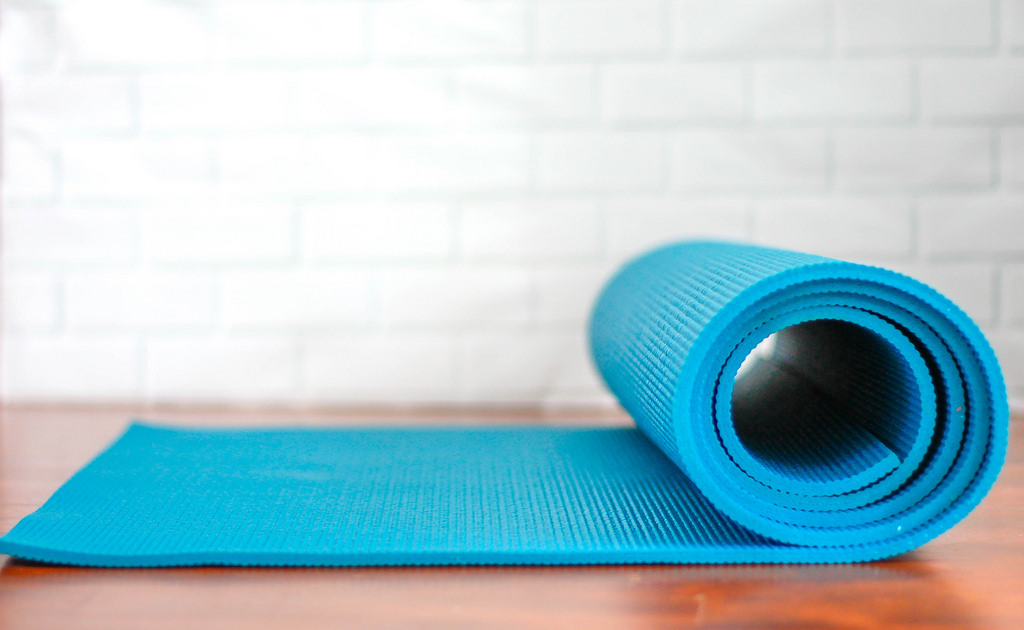For thousands of years, people have been practicing the art of yoga. Originally from India, this discipline offers balance to your mental, physical, and spiritual wellbeing. In the modern day, people practice yoga while using yoga mats. Some yoga studios provide yoga mats for their participants, however, true yoga activists have their own. Picking out the right yoga mat can be challenging especially for new yoga enthusiasts. There are 5 main factors to consider when choosing your yoga mat; Texture, Thickness, Material, Stickiness, and Style.
Texture– You may not know it, but the texture of your yoga mat can actually help you balance! The smoother the mat, the more you risk slipping during the exercise which can possibly lead to an injury. Look for a mat that is made with with rubber or cotton. Typically, these mats are made with raised textures for extra grip. However, if you are looking for a smoother mat, consider one made from pvc.
Thickness– The standard yoga mat is ?” thick. The thinnest mats are 1/16” thick while the thickest are ¼” thick. The thickness of yoga mats matter because if a mat is too thin, it will be too harsh on your knees and joints while in some positions. If the mat is too thick, it will be harder to maintain your balance. ¼” thick mats are typically the most comfortable to use, but require a far greater level of balance.
Material– There are tons of materials to choose from when picking out your yoga mat. Some of the materials we recommend are rubber, cotton, and jute. Rubber mats are a great choice for environmental activists since they are eco-friendly! However, if you have a latex allergy you may want to avoid them. Cotton mats (A.K.A. traditional yoga mats) are commonly placed on top of other yoga mats in order to provide support that a plain cotton mat can not provide. For heavy sweaters, cotton yoga mats will absorb the sweat and actually increase your mat’s grip! Jute yoga mats are very similar to cotton mats in that they are used in conjunction with other yoga mats like rubber or pvc. Jute mats offer more support like cotton ones, however they are a bit rougher in texture and absorb less moisture.
Stickiness– Simply put, a sticky yoga mat provides easier balance, making it easier for you to grip and the mat to grip the floor. PVC yoga mats are the stickiest mats, allow you to maintain proper alignment and easily flow from one pose to the next. Cotton and jute yoga mats provide no stickiness which is why they are typically used with other yoga mats. Just be sure to keep your mat clean otherwise you will lose the sticky factor.
Style– This one is really up to you! When you decide on what type of yoga mat you want, there are sure to be tons of patterns and colors for you to choose from. A good yoga mat is one that is visually pleasing to you and makes you happy, putting you in the right mindset for performing your yoga workout.
When picking out your yoga mat, be sure to keep these five factors in mind. When you have a yoga mat that makes you feel comfortable, you will surely excel in your workout! But where is the best place to try out your new yoga mat? Why at Training Station of course!
Here at Training Station, we have tons of yoga classes for all types of yoga enthusiasts. Whether you are a beginner or an expert, our classes will be able to accomplish your mental and physical goals with our yoga classes. air max 97 air max 97




